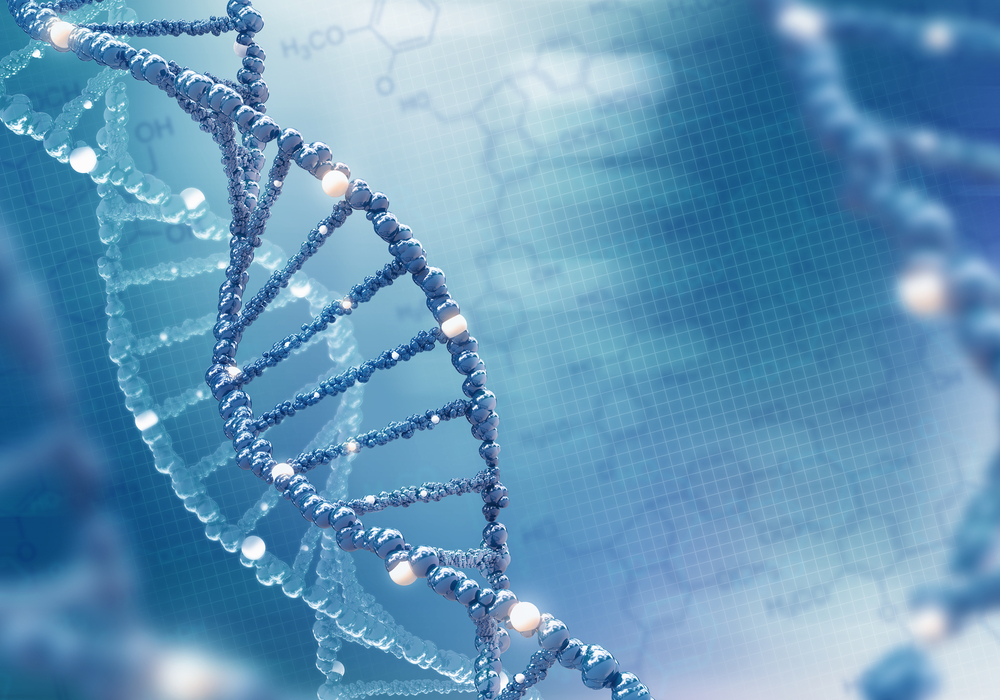Mutation in ATP13A2 Gene Linked to Nerve Cell Health and Possibly Parkinson’s, Study Says

A mutation in the ATP13A2 gene disrupts the transport of polyamines — positively charged molecules that interact with DNA and proteins to control cell growth, survival, and proliferation — killing nerve cells and potentially leading to Parkinson’s disease, a study reports.
The study, “ATP13A2 deficiency disrupts lysosomal polyamine export,” was published in the journal Nature.
The entry, exit, production, and breakdown of polyamines are all strictly controlled to ensure cell survival. When their levels inside cells rises too high, they start to be toxic, damaging and ultimately killing cells.
“Polyamines are essential molecules that support many cell functions and protect cells in stress conditions. But how polyamines are taken up and transported in human cells was still a mystery. Our study reveals that ATP13A2 plays a vital role in that process,” Peter Vangheluwe, PhD, an associate professor at KU Leuven and a senior study author, said in a press release.
ATP13A2, also known as PARK9, is a gene that provides instructions to make a protein responsible for the transport of polyamines within cells, and for regulating the activity of lysosomes — small cell compartments that digest and recycle different types of molecules.
ATP13A2 is thought to protect against genetic and environmental risk factors for Parkinson’s, and its lack of activity has been associated with several neurodegenerative disorders, including Kufor-Rakeb syndrome and early onset Parkinson’s disease, and lysosomal defects.
Despite knowing that ATP13A2 played a central role in Parkinson’s, scientists did not know how a mutation in this gene could lead to the onset of this disease.
A team of researchers at KU Leuven in Belgium and their colleagues found that defects in ATP13A2 compromise the transport of polyamines in lysosomes found inside nerve cells. Such compromised transport leads to cell death, and possibly to the onset of Parkinson’s.
In their experiments, investigators studied the function of the ATP13A2 transporter in mice neurons and human neuroblastoma cells (SH-SY5Y cells) cultured in a lab dish, as well as in roundworms that had been genetically engineered to produce mutated forms of ATP13A2.
When they inactivated Atp13a2 (the mouse equivalent of the human ATP13A2 gene) in mice neurons, cells became more susceptible to cell death triggered by polyamines, compared to normal nerve cells.
Exposure to polyamines also stunted the growth of healthy roundworms, having an even stronger effect in animals producing mutated forms of the transporter.
When they examined the function of ATP13A2 in more detail, they found the transporter sits on the surface of lysosomes and is responsible for carrying polyamines from lysosomes into the cytosol, the liquid-like substance that fills the interior of cells.
“Our experiments showed that polyamines enter the cell via lysosomes, and that ATP13A2 transfers polyamines from the lysosome to the cell interior. This transport process is essential for lysosomes to function properly as the ‘waste disposal system’ of the cell, where obsolete cell material is broken down and recycled,” Vangheluwe said.
Mutations in the ATP13A2 gene can compromise the activity of the protein and transport of polyamines, leading to a buildup of polyamines inside lysosomes and to a shortage of polyamines in the cytosol.
Lower levels of polyamines in the cytosol may increase cells’ vulnerability to toxic substances (e.g., reactive oxygen species and heavy metals) that are normally scavenged by these molecules, while the buildup of polyamines inside lysosomes may lead to their destruction, and ultimately to cell death.
“Mutations in the ATP13A2 gene disrupt this [lysosome] transport process, so that polyamines build up in lysosomes. As a result, the lysosomes swell and eventually burst, causing the cells to die. When this happens in the part of the brain that controls body movement, this process may trigger the motion problems and tremors related to Parkinson’s disease,” Vangheluwe said.
Investigators said more research is needed to understand how genetic mutations in ATP13A2 may be linked to other problems in Parkinson’s, including mitochondrial dysfunction and the accumulation of plaques in the brain. (Mitochondria are the cell compartments responsible for the production of energy; plaques result from the gradual buildup of certain proteins.)
Another important step, the researchers said, will be moving these findings to the clinic, in hope of discovering new ways to ease the symptoms of patients carrying mutations in ATP13A2.
“Now that we have unravelled the role of ATP13A2, we can start searching for molecules that influence its function. Our lab is already collaborating with the Centre for Drug Design and Discovery — a tech transfer platform established by KU Leuven and the European Investment Fund — and receives support from the Michael J. Fox Foundation,” Vangheluwe said.
The team believes this work may also help shed light on other age-related conditions, including cancer, heart disease, and other neurological disorders.






